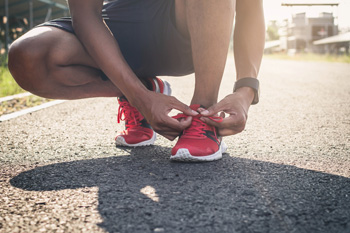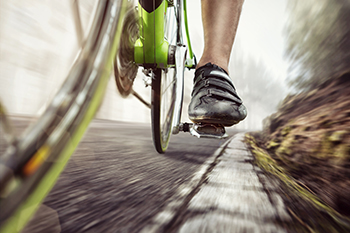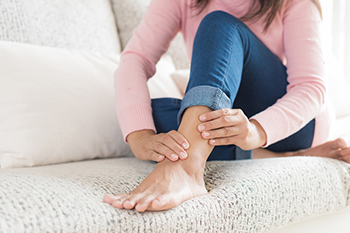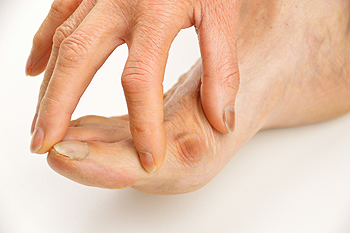Connect With Us
Blog
Items filtered by date: June 2024
Tuesday, 25 June 2024 00:00
Finding the Right Running Shoes for Your Foot Type

Choosing the right running shoes based on your foot type and running style is critical for comfort and injury prevention. For pronated feet, where the foot rolls inward excessively, stability or motion-control shoes provide the necessary support. Neutral runners, whose feet roll inward slightly, benefit from neutral cushioning shoes that offer balanced support. Supinated feet, which roll outward, require shoes with extra cushioning to absorb impact. Arch level is another consideration. High arches need cushioned shoes for shock absorption, while low arches benefit from stability shoes. Heel strikers, who land on their heels, should look for shoes with ample heel cushioning. Additionally, midfoot and forefoot strikers need shoes with cushioning in the midfoot and forefoot areas. Runners can experience foot injuries from wearing shoes that do not fit their running needs. If this applies to you, it is suggested that you consult a podiatrist who can treat any foot condition, and guide you on how to choose the right running shoes for you.
If you are a runner, wearing the right running shoe is essential. For more information, contact Carrie Frame, DPM from West Virginia Foot & Ankle. Our doctor can provide the care you need to keep you pain-free and on your feet.
Choosing the Right Running Shoe for Your Foot Type
To increase performance and avoid the risk of injury, it is important to choose the right running shoe based on your foot type. The general design of running shoes revolves around pronation, which is how the ankle rolls from outside to inside when the foot strikes the ground.
- Neutral runners are able to choose from a wide variety of shoes, including minimalist shoes or even going barefoot.
- Runners who overpronate, or experience an over-abundance of ankle rolling, should choose shoes that provide extra motion control and stability.
- Runners who underpronate, or supinate, have feet that have high arches and lack flexibility, preventing shock absorption. They require shoes with more flexibility and cushion.
If you have any questions please feel free to contact our office located in Charleston, WV . We offer the newest diagnostic and treatment technologies for all your foot and ankle needs.
Thursday, 20 June 2024 00:00
Keep Your Feet Healthy So You Can Stay Active
Tuesday, 18 June 2024 00:00
Preventing Falls While Riding a Bicycle

To prevent falls while riding a bicycle, start by ensuring your bike fits properly, as this provides better control and comfort. Avoid obstacles by staying alert and scanning the path ahead, allowing you to navigate around potential hazards. Maintaining composure is key, and try not to get startled by sudden noises or movements, as staying calm helps you keep control. It is essential to take breaks when tired, as fatigue can impair your balance and reaction time. Riding at a standard pace, without sudden accelerations or decelerations, helps maintain stability and control. By following these practices, you can significantly reduce the risk of falls and enjoy a safer cycling experience. Falling off a bike can cause painful foot injuries. If this has happened to you, it is suggested that you consult a podiatrist who can offer treatment and relief remedies, in addition to effective fall prevention tips.
Preventing falls among the elderly is very important. If you are older and have fallen or fear that you are prone to falling, consult with Carrie Frame, DPM from West Virginia Foot & Ankle. Our doctor will assess your condition and provide you with quality advice and care.
Every 11 seconds, an elderly American is being treated in an emergency room for a fall related injury. Falls are the leading cause of head and hip injuries for those 65 and older. Due to decreases in strength, balance, senses, and lack of awareness, elderly persons are very susceptible to falling. Thankfully, there are a number of things older persons can do to prevent falls.
How to Prevent Falls
Some effective methods that older persons can do to prevent falls include:
- Enrolling in strength and balance exercise program to increase balance and strength
- Periodically having your sight and hearing checked
- Discuss any medications you have with a doctor to see if it increases the risk of falling
- Clearing the house of falling hazards and installing devices like grab bars and railings
- Utilizing a walker or cane
- Wearing shoes that provide good support and cushioning
- Talking to family members about falling and increasing awareness
Falling can be a traumatic and embarrassing experience for elderly persons; this can make them less willing to leave the house, and less willing to talk to someone about their fears of falling. Doing such things, however, will increase the likelihood of tripping or losing one’s balance. Knowing the causes of falling and how to prevent them is the best way to mitigate the risk of serious injury.
If you have any questions, please feel free to contact our office located in Charleston, WV . We offer the newest diagnostic and treatment technologies for all your foot care needs.
Tuesday, 11 June 2024 00:00
Manging Osteoarthritis of the Ankle

Unlike osteoarthritis in other joints, ankle arthritis typically develops following a previous ankle injury, often years or even decades later, with about 95 percent of cases attributed to past traumas. Excess weight and repetitive high-impact stress further can affect osteoarthritis of the ankle, highlighting the importance of lifestyle modifications and weight management strategies. Ankle cartilage, being half the thickness of knee cartilage, is more susceptible to forces, increasing the risk of osteoarthritis development. Additionally, individuals diagnosed with ankle osteoarthritis are typically younger than those diagnosed with the same condition in other joints. Further, it may progress more rapidly to end-stage disease, potentially affecting other joints as they compensate for ankle instability. Diagnosis often requires advanced imaging techniques, such as MRI scans to accurately assess ligament and cartilage damage. Relief techniques can include low-impact exercise, weight management, supportive footwear, and medications. In severe cases, surgery may be considered. If you are experiencing persistent ankle pain or have a history of ankle injuries, it is suggested that you schedule an appointment with a podiatrist for an accurate diagnosis and personalized treatment options.
Arthritis can be a difficult condition to live with. If you are seeking treatment, contact Carrie Frame, DPM from West Virginia Foot & Ankle. Our doctor can provide the care you need to keep you pain-free and on your feet.
Arthritic Foot Care
Arthritis is a joint disorder that involves the inflammation of different joints in your body, such as those in your feet. Arthritis is often caused by a degenerative joint disease and causes mild to severe pain in all affected areas. In addition to this, swelling and stiffness in the affected joints can also be a common symptom of arthritis.
In many cases, wearing ill-fitting shoes can worsen the effects and pain of arthritis. Wearing shoes that have a lower heel and extra room can help your feet feel more comfortable. In cases of rheumatoid arthritis, the arch in your foot may become problematic. Buying shoes with proper arch support that contour to your feet can help immensely.
Alleviating Arthritic Pain
- Exercises that stretch the foot can prevent further pain and injury and increase mobility
- Most of the pain can be alleviated with anti-inflammatory drugs, heat, and topical medications
- Massages can help temporarily alleviate pain.
It is best to see your doctor for the treatment that is right for your needs and symptoms. Conditions vary, and a podiatrist can help you determine the right method of care for your feet.
If you have any questions, please feel free to contact our office located in Charleston, WV . We offer the newest diagnostic tools and technology to treat your foot and ankle needs.
Tuesday, 04 June 2024 00:00
Bunion Relief
 A bunion is a bony bump that forms on the joint at the base of the big toe, causing it to deviate towards the other toes. This condition, known as hallux valgus, can result from genetic predisposition, wearing tight or narrow shoes, arthritis, or stress on the foot. Symptoms include pain, swelling, redness, and difficulty in walking. Additionally, the skin over the bunion may gradually become thickened and tender. Diagnosis typically involves a physical examination and X-rays to assess the severity and underlying bone structure. Treatment options range from conservative methods such as wearing wider shoes, using orthotic devices, and taking anti-inflammatory medications, to more invasive procedures like bunion surgery for severe cases. Untreated bunions can lead to complications such as chronic pain, bursitis, hammertoe, and difficulty finding comfortable footwear. If you have a bunion that is causing you discomfort, it is suggested that you schedule an appointment with a podiatrist for a tailored treatment plan.
A bunion is a bony bump that forms on the joint at the base of the big toe, causing it to deviate towards the other toes. This condition, known as hallux valgus, can result from genetic predisposition, wearing tight or narrow shoes, arthritis, or stress on the foot. Symptoms include pain, swelling, redness, and difficulty in walking. Additionally, the skin over the bunion may gradually become thickened and tender. Diagnosis typically involves a physical examination and X-rays to assess the severity and underlying bone structure. Treatment options range from conservative methods such as wearing wider shoes, using orthotic devices, and taking anti-inflammatory medications, to more invasive procedures like bunion surgery for severe cases. Untreated bunions can lead to complications such as chronic pain, bursitis, hammertoe, and difficulty finding comfortable footwear. If you have a bunion that is causing you discomfort, it is suggested that you schedule an appointment with a podiatrist for a tailored treatment plan.
If you are suffering from bunion pain, contact Carrie Frame, DPM of West Virginia Foot & Ankle. Our doctor can provide the care you need to keep you pain-free and on your feet.
What Is a Bunion?
Bunions are painful bony bumps that usually develop on the inside of the foot at the joint of the big toe. As the deformity increases over time, it may become painful to walk and wear shoes. Women are more likely to exacerbate existing bunions since they often wear tight, narrow shoes that shift their toes together. Bunion pain can be relieved by wearing wider shoes with enough room for the toes.
Causes
- Genetics – some people inherit feet that are more prone to bunion development
- Inflammatory Conditions - rheumatoid arthritis and polio may cause bunion development
Symptoms
- Redness and inflammation
- Pain and tenderness
- Callus or corns on the bump
- Restricted motion in the big toe
In order to diagnose your bunion, your podiatrist may ask about your medical history, symptoms, and general health. Your doctor might also order an x-ray to take a closer look at your feet. Nonsurgical treatment options include orthotics, padding, icing, changes in footwear, and medication. If nonsurgical treatments don’t alleviate your bunion pain, surgery may be necessary.
If you have any questions, please feel free to contact our office located in Charleston, WV . We offer the newest diagnostic and treatment technologies for all your foot care needs.

